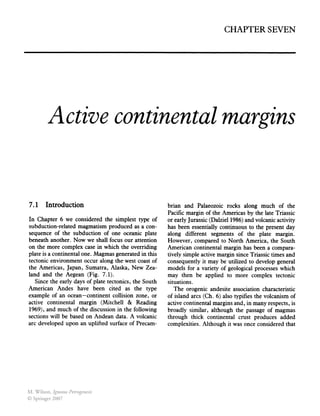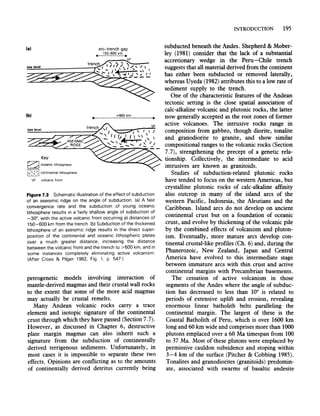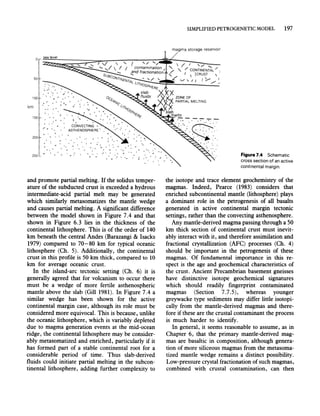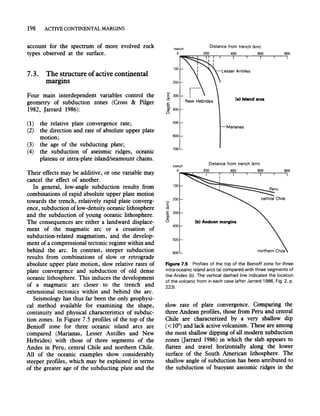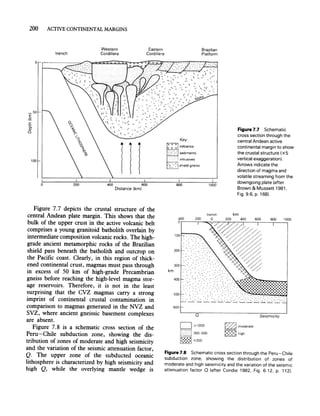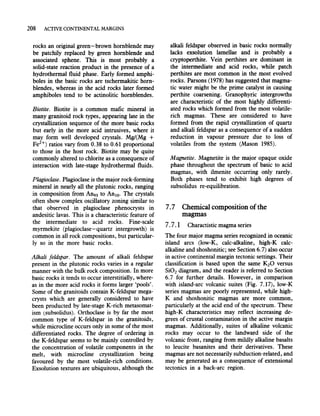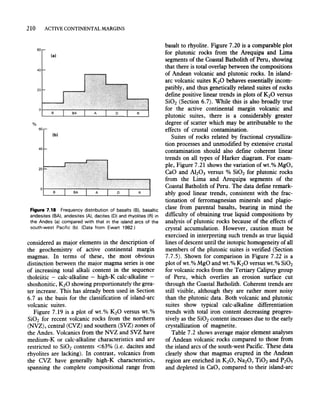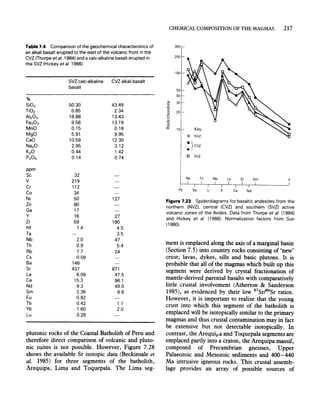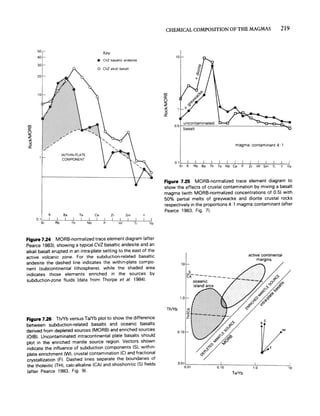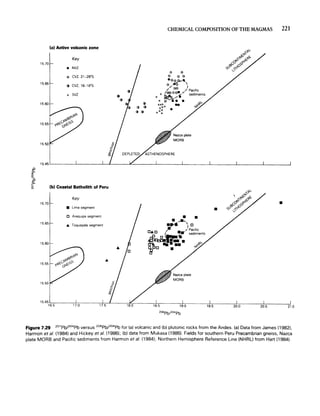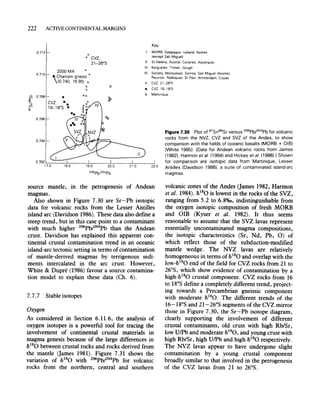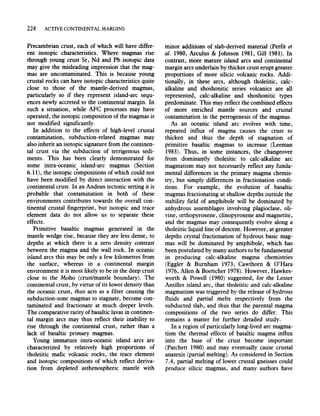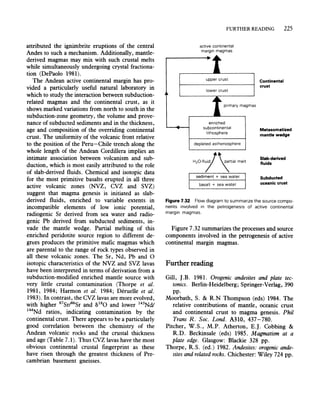This document summarizes active continental margins, where a continental plate overrides an oceanic plate being subducted. It focuses on the Andes as the archetypal example, describing three volcanic zones (northern, central, southern). The central zone contains thicker Precambrian crust and produces more silica-rich magmas compared to island arcs. Active volcanism occurs where subduction is steep (~30°) but not where aseismic ridges cause shallow subduction (<10°). Magmas result from mantle and crustal melting, interacting with continental crust, giving them distinct geochemical signatures. Large batholith belts were emplaced during periods of uplift and erosion when subduction shallows.
